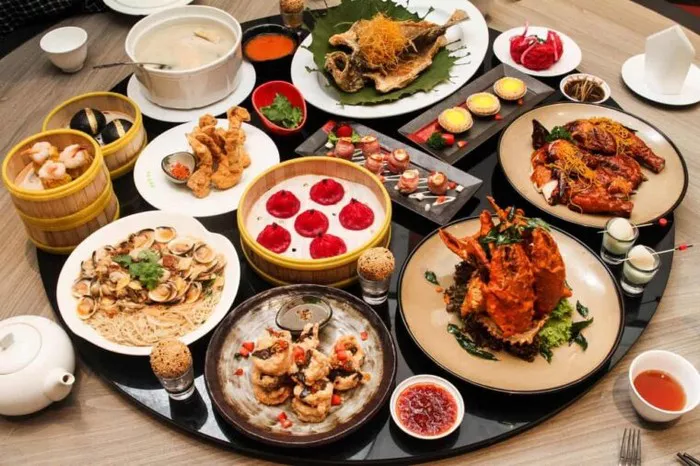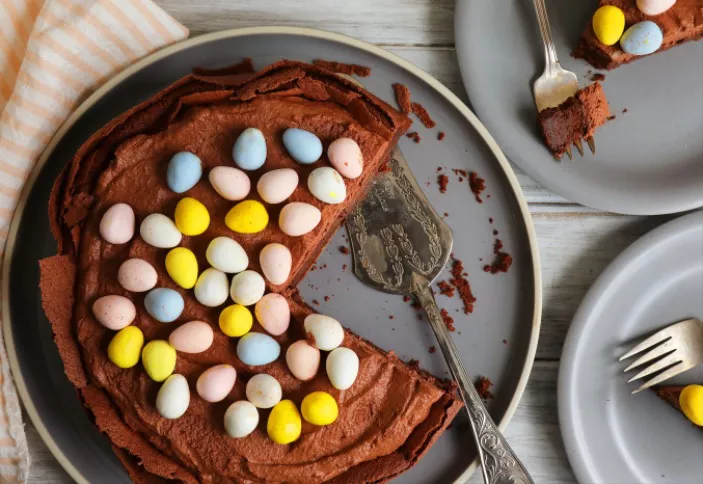Easter is a celebration of renewal, joy, and togetherness, and desserts play a starring role in this festive occasion. A good Easter dessert balances tradition, flavor, and creativity while reflecting the season’s themes of rebirth and abundance. Drawing from culinary traditions and modern innovations, this article dives into the essence of what makes an Easter dessert exceptional, offering insights into ingredients, techniques, and cultural significance.
The Foundations of a Memorable Easter Dessert
Symbolism and Seasonal Ingredients
Easter desserts often incorporate symbols like eggs, lambs, or crosses, which carry religious or cultural meanings. For example, eggs represent new life, while lamb-shaped cakes nod to sacrificial symbolism in Christian traditions. Seasonal ingredients such as fresh berries, citrus, carrots, and honey are also central, as they mirror spring’s arrival 2.
A dessert like carrot cake, with its moist layers and cream cheese frosting, embodies this harmony. Carrots, a root vegetable harvested in early spring, add natural sweetness and moisture, while spices like cinnamon evoke warmth. Similarly, hot cross buns, marked with a cross, blend spices and dried fruits, symbolizing the end of Lent and the resurrection 2.
Texture and Balance
A successful dessert engages multiple senses. Consider the contrast in a Portuguese Pão de Ló (sponge cake), which pairs a crispy exterior with a custard-like center. For Easter, textures might include:
- Crunchy toasted nuts in a simnel cake.
- Silky chocolate ganache in egg-shaped truffles.
- Flaky layers in a Greek Tsoureki (sweet bread).
Balance is key—sweetness should be tempered with acidity (e.g., lemon glaze on a pound cake) or bitterness (dark chocolate in mousse) to avoid cloying richness.
Traditional Easter Desserts Around the World
European Classics
Italy: Colomba Pasquale
Shaped like a dove, this citrus-scented bread is studded with candied peel and almonds. Its light, airy crumb symbolizes peace and renewal.
Germany: Osterlamm
A lamb-shaped cake baked in a mold, often flavored with rum and dusted with powdered sugar. It’s served alongside dyed eggs for a striking presentation.
United Kingdom: Simnel Cake
A fruitcake layered with marzipan, topped with 11 marzipan balls representing Jesus’ apostles (minus Judas). It’s traditionally eaten on Mothering Sunday and Easter 2.
Americas and Beyond
USA: Bunny-Shaped Cookies
Sugar cookies decorated with pastel icing are a staple at Easter gatherings, especially for children’s egg hunts 2.
Mexico: Capirotada
A bread pudding layered with cheese, raisins, and cloves, soaked in syrup. Its ingredients symbolize the Passion of Christ.
Australia: Chocolate Bilby
In place of the Easter bunny (which is an invasive species), Australians celebrate with chocolate bilbies to support conservation efforts.
Modern Twists on Easter Favorites
Reinventing Classics
Deconstructed Carrot Cake
Serve carrot cake as a trifle: layer spiced cake crumbs with mascarpone cream, candied carrots, and walnut brittle for a playful update.
Vegan Hot Cross Buns
Substitute butter with coconut oil and use flax eggs to cater to plant-based diets without sacrificing flavor.
Fusion Flavors
Matcha White Chocolate Eggs
Blend Japanese matcha into white chocolate ganache for a vibrant, earthy filling inside sugar shells.
Chai-Spiced Baklava
Add cardamom and ginger to traditional baklava layers for a warming twist.
Presentation
Themed Decorations
Nature-Inspired Displays
Use edible flowers (e.g., violets, pansies) to garnish desserts or nestle treats in baskets lined with fresh herbs.
Egg-Centric Designs
Hollow chocolate eggs filled with mousse or mini cupcakes create a “surprise” element, perfect for Easter hunts 2.
Interactive Desserts
DIY Decorating Stations
Set up a table with undecorated cookies, icing, and sprinkles to engage guests of all ages—ideal for family-friendly events 2.
Dessert Charcuterie Boards
Arrange mini desserts like macarons, truffles, and fruit tarts on a wooden board for a visually stunning centerpiece.
Dietary Considerations and Inclusivity
Gluten-Free Options
Almond Flour Lemon Cake
A zesty, gluten-free cake made with almond flour and topped with a tangy glaze.
Chia Seed Pudding
Layer chia pudding with coconut milk and fresh mango for a light, nutrient-rich dessert.
Reduced-Sugar Alternatives
Dark Chocolate-Dipped Strawberries
Use 70% dark chocolate for a lower-sugar option that still satisfies cravings.
Date-Sweetened Energy Bites
Blend dates, nuts, and cocoa powder for no-bake treats that are both healthy and festive.
Pairing Desserts with Easter Activities
Brunch Pairings
Serve light desserts like lemon ricotta tart alongside savory dishes such as quiche or smoked salmon. The citrus notes cut through rich flavors, cleansing the palate.
Post-Hunt Treats
After an egg hunt, offer portable snacks like mini carrot cake muffins or chocolate-covered pretzel rods shaped like bunny tails. These are easy to eat on the go and delight children 2.
Conclusion
A good Easter dessert transcends taste—it tells a story, evokes nostalgia, and brings people together. Whether you’re baking a time-honored Tsoureki or experimenting with vegan adaptations, let the season’s themes of renewal and joy guide your creativity. By blending tradition with innovation and prioritizing inclusivity, your Easter spread will leave a lasting impression.
For further inspiration, explore seasonal recipes or consult local bakeries specializing in holiday treats 28. Happy baking, and may your Easter be as sweet as your desserts!
Related topics:



























